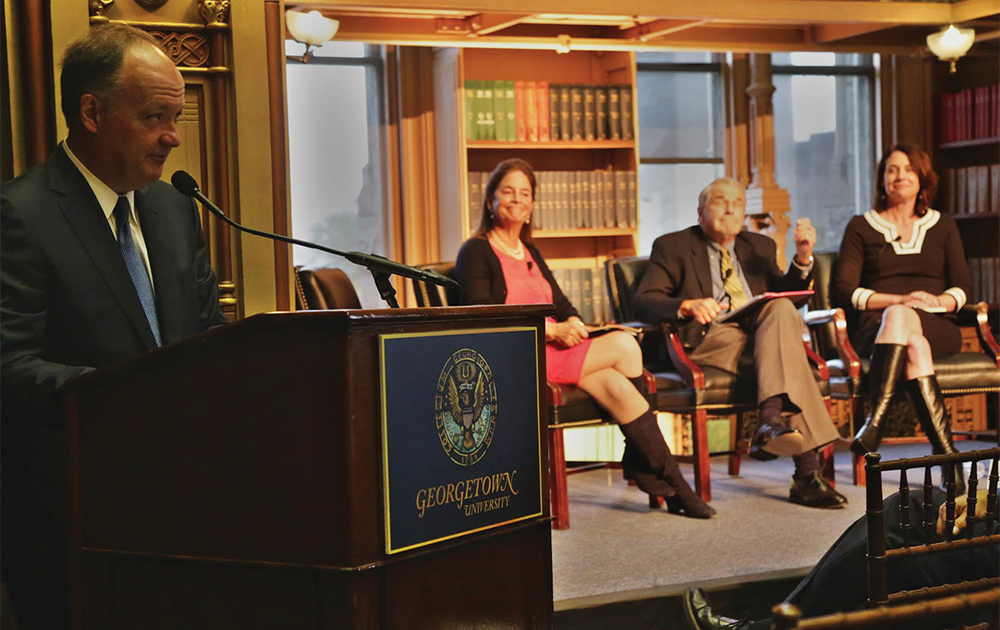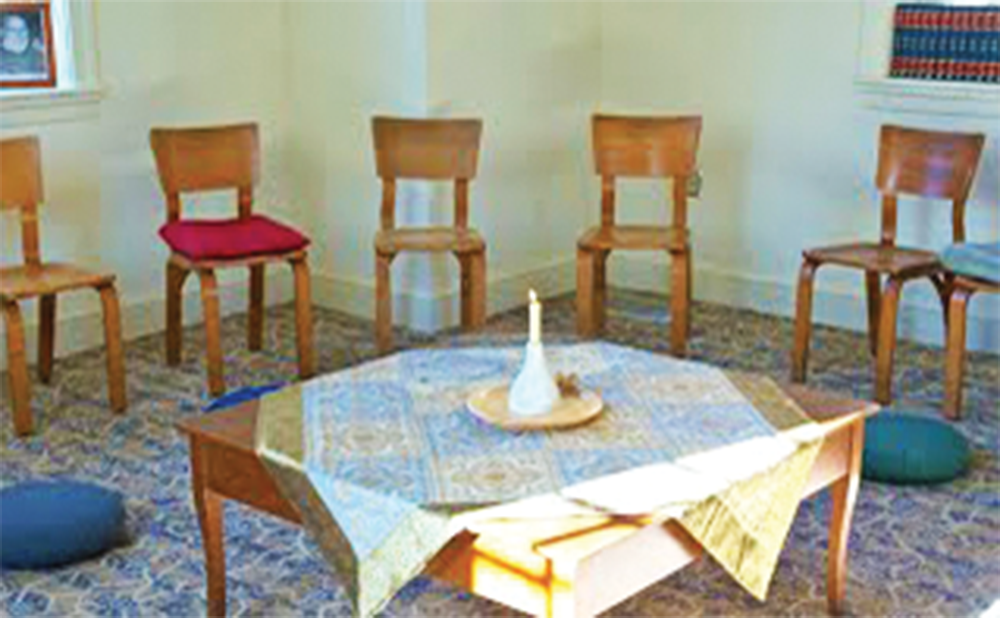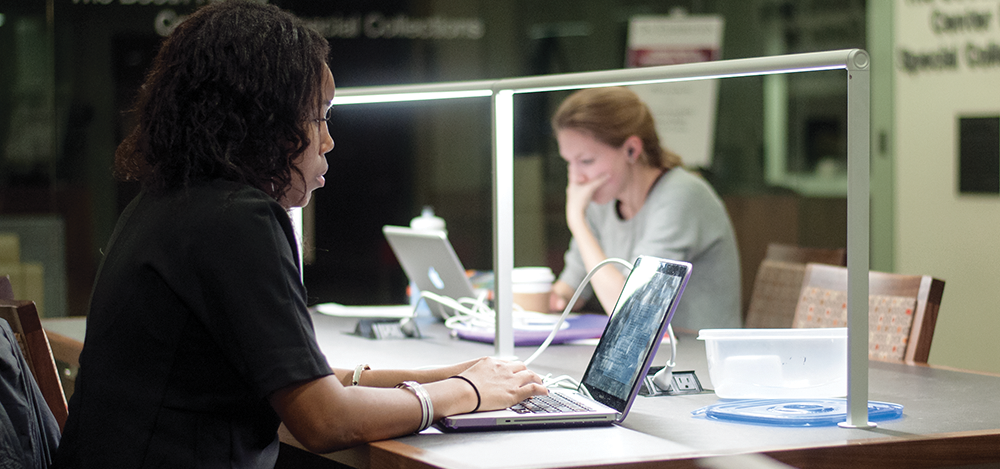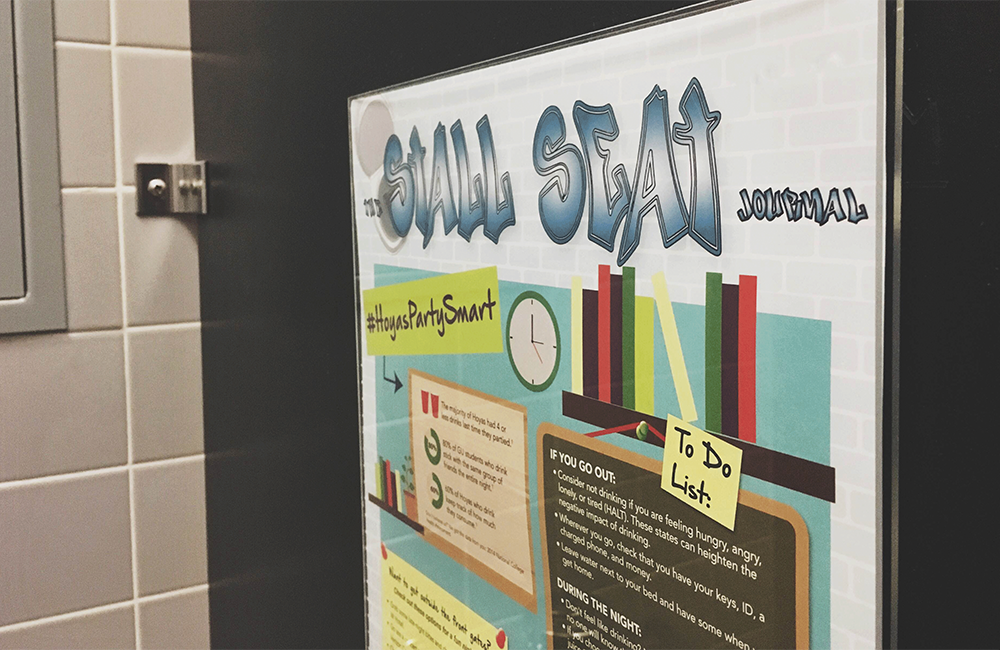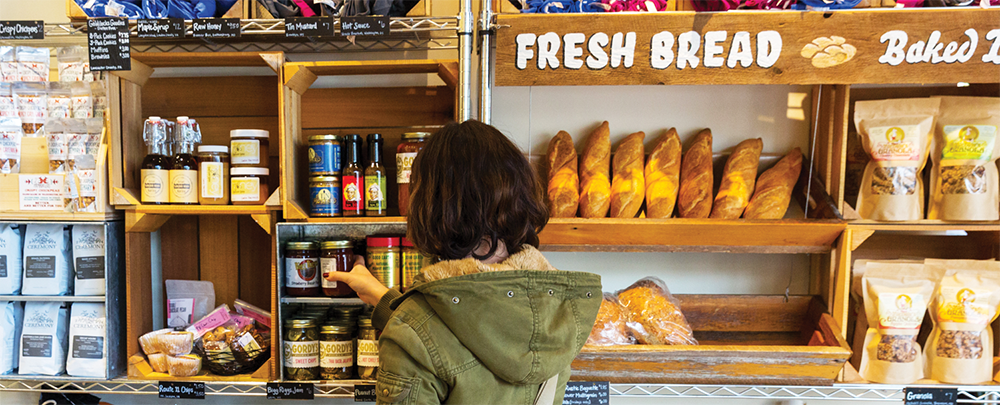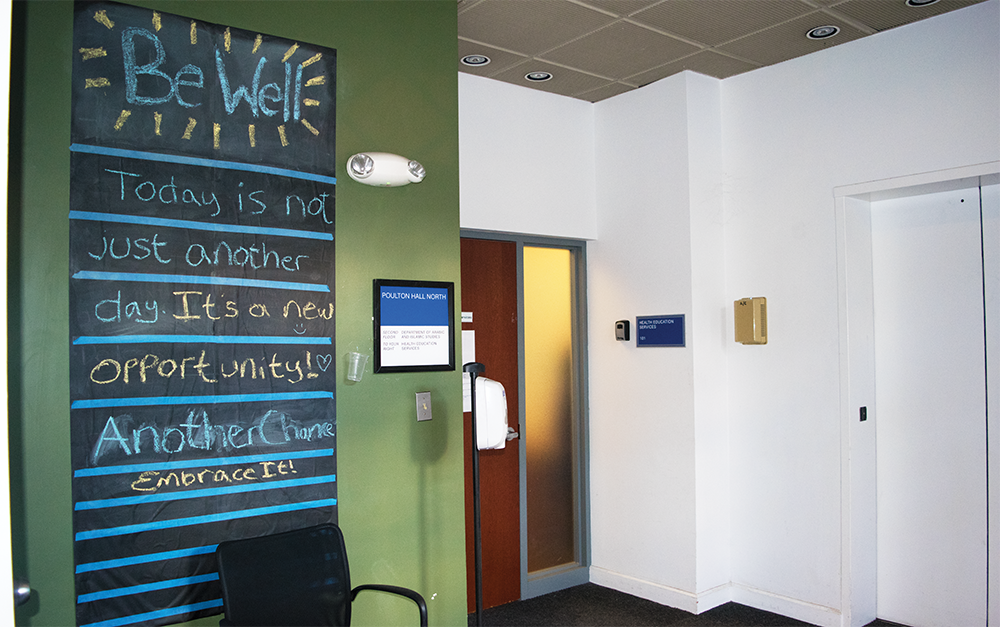
Despite common student perceptions, there have been significant improvements in campus health and wellness. Collaborations between the Georgetown University Student Association, Health Education Services and the Student Health Center, among others, have led to increased awareness and engagement.
When reflecting on student wellness on campus, it is easy to sensationalize and laser focus on extreme examples of poor health. With their risky behavior and lack of self-care, college students have a reputation for failing to live their best lives.
However, with increased attention from health care institutions and the media, universities have begun to emphasize the importance of students’ mental and physical health through a variety of programs and services.
Georgetown is no exception. The Student Health Center, Health Education Services and numerous student clubs have all installed educational events and trainings that facilitate dialogue around holistic health.
The debate about Hoya health and wellness is interdisciplinary and involves various groups and organizations not formally associated with health care. The Women’s Center has made recent improvements to ensure that women on campus have the right to adequate and appropriate health care.
“Our health and wellness offices have increased their staffing,” Director of the Women’s Center Laura Kovach said. “More staff means we can support more students.”
The center works closely with the SHC to understand the specific needs of Georgetown’s students, faculty and staff. Since 2010, Kovach and Hoya Kids Learning Center Director Jane Banister have worked to expand lactation spaces on campus.
“New moms struggled to find space to pump when they returned to class or work from having a child,” Kovach said. “We are happy to see how students, faculty and staff are utilizing these spaces.”
The Women’s Center continues efforts to enlarge spaces and resources needed for female Hoyas.
Regarding general student health concerns, the most common complaint is the difficulty in accessing the resources of the Student Health Center. Dr. Blair Heinke, director of sports medicine at the Student Health Center, recognizes these issues as well, stating that the availability of doctors will likely remain a weakness going forward.
“A lot of issues we address are acute,” Heinke wrote in an email to The Hoya. “You wake up with a sore throat and a fever, so you need to be seen today. It is very difficult to predict how many of these urgent appointments we will need and sometimes … the wait becomes long.”
The Student Health Center is working hard to address these concerns and is implementing many new improvements to quality of and access to care. Heinke indicates four specific areas for improvement: more appointment availability, more services, more space and more technology.
The SHC is already taking steps toward addressing availability issues with expanded hours and new staffing efforts. According to Heinke, it will also soon be offering Mirenas, a type of intrauterine device, as a new service for patients suffering from dysmennorhea, or painful menstruations. However, issues continue to persist due to physical and financial constraints, especially the fixed size of the Student Health Center.
Another important health institution on campus is Health Education Services. In fact, many of the health initiatives that many Hoyas are familiar with — BeWell Week, Stall Seat Journal, Sexual Assault Peer Educators — are led by HES, spearheaded by Director Carol Day.
“Georgetown is a unique hybrid of health in general,” Day said in an interview with The Hoya. “We like to think comprehensively about health and well-being for all students.”
Recently, HES has focused on creating a healthier social culture on campus, with a healthier approach to alcohol, mental wellness and additional protections against sexual assault.
Back in 2004, The Stall Seat Journal was founded as a result of an unusual collaboration of Health Education Services, the Anheuser-Busch beer company and eight Georgetown students. Anheuser-Busch works with the National Social Norms Institute to establish healthy drinking practices, apart from the traditional calls for abstinence, and provides grants allowing the distribution of the monthly educational posters in more than 400 bathrooms on campus.
“We try to make them timely and interesting for students always,” Day said. “We often try to build in health messages. So, despite the fact that it’s focusing on something relevant to your life at the moment, no matter if it’s finals or a variety of things, we will also give other messages about alcohol use health protection.”
The goal behind the Journal is to emphasize that the norm is usually less extreme than many assume. Day stresses that the publication uses Georgetown-specific research data to tear away at the sensationalized image many have of college alcohol culture. In a 2010 campus study run by HES, 86 percent of respondents reported The Stall Seat Journal to be “Very/Moderately Useful,” while 41 percent claimed to have used specific tips they learned from the publication.
Somewhat related to alcohol use on campus, sexual assault has become a main focus for Health Education Services. With three different content units, SAPE is rapidly expanding at Georgetown and being incorporated into multiple clubs. Last year, SAPE educated 700 students on raising awareness about campus sexual assault and how to support survivors.
This year, it hopes to exceed that figure with a record number of 75 peer educators. University President John J. DeGioia recently approved funds for “Bringing in the Bystander,” a training program to be given to all student leaders and at least three people from each of the largest clubs on campus. The training will emphasize how to spot and react to dangerous situations.
Last year, SAPE Special Projects Chair Carlo Izzo (COL ’17) said in an interview with The Hoya that the bystander program would be designed in reaction to the concerning results from the recent campus climate survey. Administered in January 2016, the survey revealed distressing statistics; for example, about one in five Georgetown students suspected that a friend had been sexually assaulted. HES has made concerted efforts to partner with different organizations to encourage a healthy culture of sexuality on campus.
“Everyone in our office is meeting on a subcommittee with that group trying to figure out how to address the problems we’re having with sexual assault, harassment, relationship violence,” Day said about her office’s response to the results of the climate survey.
Beginning next week, HES will host a series of dinners with the Office of Residential Living to educate students about healthy relationships. Another successful partnership has been HES’s work with the Women’s Center, installing the sexual assault awareness curriculum “I Am Ready” during New Student Orientation.
In recent years, Day has seen the HES and the wider campus community take the greatest steps in their work for students’ health and wellness. The university’s Mental Health Advisory Board is just wrapping up after almost two years of careful work exploring students’ mental health needs.
“We can look at our data and say, yeah, nationally, as well as at Georgetown, incidents of anxiety and depression have gone up,” Day said. “Students are stressed and not well in ways that we think are meaningful.”
In response, the counseling center has begun to adopt new policies that make mental health care more accessible through free appointments, lower copays, more providers and increased transparency about medical leave policies.
Students have noticed and responded to these same needs. Active Minds, a student organization, aims to destigmatize mental illness by encouraging open dialogue across campus through events and panels it hosts.
In the spring of 2015, students, in collaboration with CAPS and HES, launched Project Lighthouse, an online peer-to-peer counseling program. Chair of the Georgetown University Student Association Mental Health Committee and a leader of Project Lighthouse Ben Johnson (NHS ’17) believes mental and physical health are inextricably linked.
“I don’t think mental health can be separated from physical health,” Johnson said. “For example, good mental health can help give motivation to make healthy choices about sleep, eating, exercise and drinking, which can in turn create better or worse mental health.”
Heinke concurs.
“Unfortunately, mental health is also a very complex issue that has no quick fixes,” Heinke said. “Our student health providers are good at identifying mental issues and recommending treatment options, counseling and medications. However, we are not trained specifically in counseling and cannot offer that side of treatment in our clinic.”
Johnson is encouraged by growing discourse around these stigmatized subjects from both students and the administration, but he considers community to hold the most responsibility when it comes to breaking down mental illness.
“Early exposure to ideas about seeking help for mental health concerns, such as during NSO, in professor’s syllabuses or during RA meetings, could help normalize the idea and the promotion of mental health events and services, both from students and from the administration, will keep students thinking about it,” Johnson said.
Johnson said he sees a growing wealth of resources for mental wellness at Georgetown, such as CAPS, the Cornerstone Initiative and HES. There are people scattered throughout every pocket of the administration attempting to ease the stress of daily student life at Georgetown, but many people never hear about them.
“I think we still have a long way to go in publicizing services,” Johnson said. “My number one unknown resource probably goes to the fact that the Cawley Career Center actually employs licensed counselors to not only give you help with the job search but also with the stress that comes with it.”
Even with all the health service improvements coming to campus, Georgetown’s chaotic culture often makes it hard for students to take advantage of the copious resources. Johnson is heartened by the new emphasis on mental health on campus but acknowledges there is still work to be done.
“Given the history of ignoring mental health, despite its clear importance, I always think we should take a special effort to consider it when thinking about health,” Johnson said.
Meanwhile, Day is concerned that the overbooked schedules of Georgetown students may interfere with adequate focus on their health.
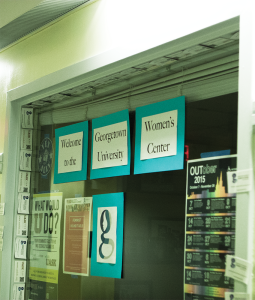
The Women’s Center, although not formally a health care institution, has worked to provide better health care for women students, faculty and employees.
“They’re often willing to cut corners on their health, or they think they need to, in order to stick with the expectation that here’s the rhythm of the culture or here’s what you do to be a superstar at a place like Georgetown,” Day said.
For the resources to be successful as they expand on campus, the responsibility falls on not only the administration but also the students. Day sees her work as dependent on an equal collaboration with the Georgetown community.
“We’ll always be challenged by ‘busyness’ culture. We need students to be equal partners and say, ‘Yeah, we have to do less. We’re stretched too far,’” Day said.
Until then, resources will remain opportunities. Georgetown has made measurable improvements in health and wellness in the past few years, but many students on campus have yet to recognize those steps in the right direction.
When more students start actively prioritizing their well-being in partnership with the university and its available resources, the constant effort to improve campus health becomes easier. An increase in that effort requires a collective commitment from providers, students and the university, but, according to Heinke, community mentality is a tool they already have at their disposal.
“Our strength is our community with providers who are excited and dedicated to taking care of students,” Heinke said. “I speak for all my colleagues when I say I love to work at Georgetown for that community feeling and sense of purpose.”








